
|
 |

|
 |
Freedom Diaries: At the stroke of midnight July 31, 2020 August is the month of marking India's 73rd Independence Day. We spoke to several dance seniors and asked them to share a memory of what that day was like! Read the words and thoughts of many revered names in the dance world in our special article. YOG SUNDER DESAI (born 1921) 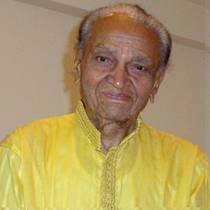 I was in Calcutta on 15th August 1947. Known as Yogendra Sundar then, I founded the Indian Revival Group in 1948 in Calcutta and was a member of Indian Progressive Ballet Troupe that was formed by me and 2 other dancers on a cooperative basis. The morning of 15th August 1947 brought the news of Independence along with the formation of 2 new dominions - India and Pakistan. Those were turbulent times in Calcutta and Bengal with communal riots and fear in the minds of the people as Bengal was divided. People feared attack by Pakistan and were running helter skelter in Esplanade, the heart of Calcutta. Seeing this commotion, I also returned to my No. 3, SR Das Road home. Gandhiji was also in Calcutta on 15th August 1947 to restore communal harmony and peace in Bengal. My father, Darbar Gopaldas Desai, a leader of the Freedom Struggle in Gujarat was in Delhi on the eve of Independence as Nehru made his 'tryst with destiny' speech. He was a member of the Constituent Assembly representing the subjects of the Gaekwad of Baroda and lived in 3 Feroze Shah Road, the house allotted to him by the Government. The constitution of India bears his signature. Darbar Saheb as he was addressed, led the masses along with Sardar in Borsad and Bardoli Satyagrahas, Salt Satyagraha and the Quit India movement. President of Kathiawad Rajkiya Parishad and Saurashtra Congress Committee, Gopaldas worked for the unification of the 200 plus states of Kathiawad - Ekam Saurashtra. On 23rd May 1947, Gopaldas was the first prince in India to merge his principality with the Indian Union on the very day it was restored to him. Many princes soon followed his lead and a momentum was created for the formation of the Indian Union. RAJEE NARAYAN (born 1931) 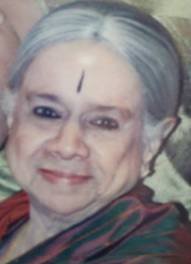 I was 16. I remember dancing at an airport hangar at the old Meenambakkam airport in Madras. With two brothers in the Air Force, I was always being called to perform for many cultural events that the Armed Forces organised. On August 14th, 1947, my sister who always sang for me, was called away at another show outside the city. My brothers were therefore forced to sing for my performance. They would get stuck on one line of the lyric and I had to improvise by going close to them and "feeding" them the next line! I was given two slots - one for music and one for dance. Each slot was for 15 minutes. For the music slot I sang the Meera bhajan "Naina Ghana Padi" and "Bharata Maatavin" and one more. For the dance section I performed to a song I had written and choreographed "Kaali Badariya" along with "Ananda Natanam Adinal Parashakti" and "Aaduvome Palli Paaduvome." I also included the famous Plate Dance that was later absorbed into the Kuchipudi repertoire. How much excitement there was and what jubilation! It was an unforgettable day! K. KALYANASUNDARAM (born 1932) 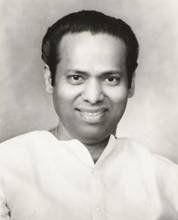 I was a 15 year old school boy in my native town of Tiruvidaimarudur. For two full weeks before Independence Day, we were taught the fiery songs of Bharatiyar. Our teacher was Gopal Nattuvanar, the second nattuvanar to my father Kuppaiah Pillai. It was our duty to learn these songs perfectly so we could sing them on August 15th. My entire family was totally committed to the independence struggle. Few of my relatives had already started moving out of the village and some had already begun the gradual transfer to Bombay. I recall my father and some elders who organised for a special metal plate from our ancestral temple to reach Pandit Nehru via C Rajagopalachari (Rajaji) as a special memento of our hereditary family's gesture towards the victorious freedom struggle. DR. SUNIL KOTHARI (born 1933) 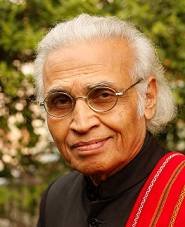 I was 14 years old, still in school preparing for SSC examination. In our middle class Gujarati bania family in Mumbai, my mother was a devotee of Mahatma Gandhi. Of the seven brothers, my two elder brothers had taken part in the freedom movement. I was taken by my elder brother on his shoulders to see the crowds at Gowalia tank when Gandhiji had given a call to the British to 'Quit India' in 1942. Therefore, there was some awareness about our achieving Independence on 15th August and with all, I joined in the celebrations. With family members, I listened to the speech by Pandit Jawaharlal Nehru, 'A Tryst with Destiny.' And I was moved and very emotional. That speech rings in my ears even today. Looking back from this distance of time, I marvel at how we achieved independence with Gandhiji's belief in non-violence. Nowhere in the world has any other country achieved independence as India has, despite the fact that the partition brought unimaginable disaster. Those have been painful memories. But on the midnight of 14th August 1947, there was sheer exhilaration shared with joy with family members. Also, I remember Robert Frost's poem: 'The woods are lovely, dark and deep, But I have promises to keep, And miles to go before I sleep,' which Pandit Nehru quoted. DR. UTPAL K BANERJEE (born 1934) 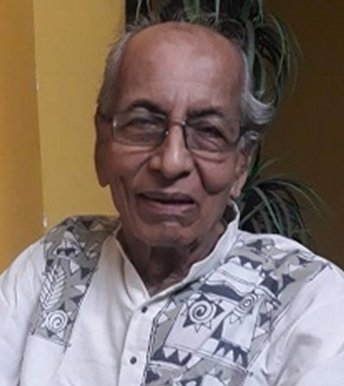 I spent my childhood in the steel city of Jamshedpur: built around the perpetually burning Blast Furnaces and periodic outpourings of the molten steel-slag turning the entire sky crimson red. The beautifully laid out township had localities named L Town, N Town, G Town; A Road , B Road, C Road, exhausted somehow at Q Road; First Avenue, Second Avenue, etc. And all Jamshedpur boys were supposed to be born with two things under their armpits: a cricket bat (in a fanatic sports loving place) and a bicycle seat (for their short, dangling feet won't reach the cycle paddles!). So, when I was in the 8th class, I was barely 13, but had no problem reaching the R.D. Tata High School some kilometers away from home, pedaling away on my father's bicycle. The school was in a beautiful two-storied oblong building, with wide open playing meadows. When freedom came in 1947, our teachers resolved to welcome the big event by hoisting the national flag and singing a patriotic song. But the National Anthem was still some three years away (decided only in 1950) and five of us, boys, were hoisted on a high pedestal to sing, with gusto: Saare jehan se accha Hindustan hamara / Hum bulbulein hai isiki, yeh gulistan hamara... On leaders' photo-garlanding and distribution of much-awaited sweets later on, my memory has got blurred. But Mohammed Iqbal's sonorous words still ring, loud and clear, in the ears: Better than the whole world is the land of ours, / We're the singing minstrels in her blossomed bowers... And, the previous midnight's holding fingers of parents and listening enthralled, in a neighbor's radio set, to Nehru's immortal oratory: When the whole world sleeps, India wakes up to her destiny... LEELA VENKATARAMAN (born 1936) 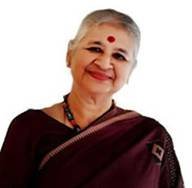 My earliest memories are of the night before August 15, 1947 when I was 10 years old with the entire family of aunts and uncles and cousins huddled round the radio in my grandfather's modest home in Bangalore, absorbed in the news reaching us through Melville de Melo's deep voice. Political developments had assumed exciting significance for youngsters and adults. Etched in mind is the picture of my 80 year old grandfather with his shock of cropped snow white hair, squatting on the carpet, back erect as a steel rod, a glow suffusing his still handsome, surprisingly unlined face. Soon we youngsters (seven of us) began putting our clothes in order. Though my school Kamala Bai in Bangalore Cantonment had no uniform, we were all told to wear pure white clothes, with feet clad in canvas shoes. The early morning school bus I boarded at Malleswaram's 15th Cross Street, after several stops and detours through a festive city with loud speakers belting out patriotic songs, took a leisurely hour to arrive at the Cantonment School, where children tumbling out of an array of vehicles started assembling on the playground of the massive stone building facing a water body, which in those days was a heartfelt sight of rippling clean water. I remember tall, dignified, white saree clad, elderly principal Ms Venkatratnam, (whose England educated, British accent, held every student in awe) overseeing the arrangements, restoring some order in the nearly 600 strong gathering of high strung youngsters (from kindergarten to sixth form). I still recollect the festooned, specially erected stage with flag pole and the Principal hoisting the tricolour. Hysterical cheers accompanied the shower of flower petals as the flag slowly opened out to proudly flutter with the breeze. Erased from mind are the details of the Principal's speech. I still hear the feverishly enthusiastic, cacophonous National Anthem of innumerable voices in myriad octaves - drowned mercifully by the stentorian voice of Mrs Ishwaran, the music teacher standing in front of a mike on stage. DR. KANAK RELE (born 1937) 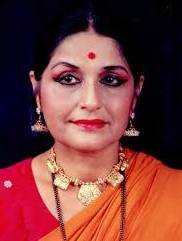 I was very young and don't remember too many details. However, this much I do recall. The exuberance of my mother and my aunt - normally very reserved women. They were singing, shouting in celebration and hugging each other. "We have sent those invaders packing!" They repeated these lines again and again. Sweets were distributed to the neighbours. Everyone was laughing, jumping up and down and dancing. I could not understand what this strange behaviour was about. That night I could not sleep for the loud drumming outside my window. I was irritated, not understanding what all this excitement was about. It was years later when my school had the flag hoisting on August 15, that I realised what that day meant to my family. PT. BIRJU MAHARAJ (born 1938) 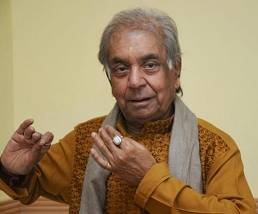 I was only 9 years old when India achieved its freedom and at that tender age, I hardly had knowledge of the real struggle that went into it. The homes, the streets and the markets were decorated with countless colourful flags. One could hear songs of freedom being sung by joyous people all around the vicinity and slogans of 'Zindabad' could be heard amidst all the singing. For me, the flags were the most attractive thing so I competed with my friends that by the end of the day, who would collect the maximum number of flags. By the evening, I went out and found a small stone, attached a string to it, winded it and threw it towards a flag and there it was, the first flag in my trap. I spent hours and hours following the same method and kept collecting. In the evening, with all my friends showing their collection, I was announced the proud winner of that competition. Amidst all the happiness, I also witnessed the growing tension and fear. Frightening demonstrations and anti-religious slogans were signs of the imminent partition. Later in life, I understood the true struggles behind our freedom and the realities of division based on religion. But I, at 9, flew 'Tiranga' kites and even today if I imagine kites, it's always the 'Tiranga.' V.P. DHANANJAYAN (born 1939)  Born in a family of freedom fighters and fastidious devotees of Mahatma Gandhi and then Congress party, I had the natural flair for patriotism. Before the day of 15th August dawned, discussions and a kind of festivity were brewing in the village Payyanur and its suburban hamlet Trikkaripur where my father, a well respected school teacher and the family was living. Elders in my joint family (Taravaad or ancestral home) wore khadi only and participated in the 'salt satyagraham' launched by Mahatma Gandhi and as children we were witness to the police arresting them. So the declaration of Swaathantryam (Independence) over blasting village loudspeakers created a flutter among us. I remember very vividly, my elder brother and myself shouting "Vande Matharam" and "Bhaarat maa ki jai." Father had already bought a couple of Trivarna pataaka (tri-colour flag) and marched us to his elementary school nearby where he was teaching. I remember the flag hoisting and children shouting the slogan "Vande Matharam" and "Bhaarat maa ki jai." Malayalam poet laureate Mahaakavi Vallathol Narayana Menon's haunting song "poora poora naalil naalin doora dooramuyaratte.... (Let our tricolour flag rise higher and higher into the sky) reverberated from the school children singing aloud, led by the teachers in chorus. Sweets distributed that day had special significance for the village school children who never had the luxury of eating laddu. Along with that, we had naaranga vellam (lemon juice) as well; that tasty treat none of us forget till today. Added to that, some of us got the Gandhi toppi (Gandhi cap made of khadi cloth). Later I came to know that those caps were made of old khadar dhotis of the school teachers including my father. That nostalgic day of childhood excitement cannot be erased from memory. Comments * Interesting memories of each one. Some aware, some not aware, but the excitement & innocence rings in these people's memories. - P Praveen Kumar (Aug 3, 2020) * What wonderful memories all we contemporaries have in different places. Enjoyed reading them. Happy Independence Day! - Sunil Kothari (Aug 2, 2020) Post your comments Please provide your name and email id when you use the Anonymous profile in the blog to post a comment. All appropriate comments posted with name & email id in the blog will also be featured in the site. |